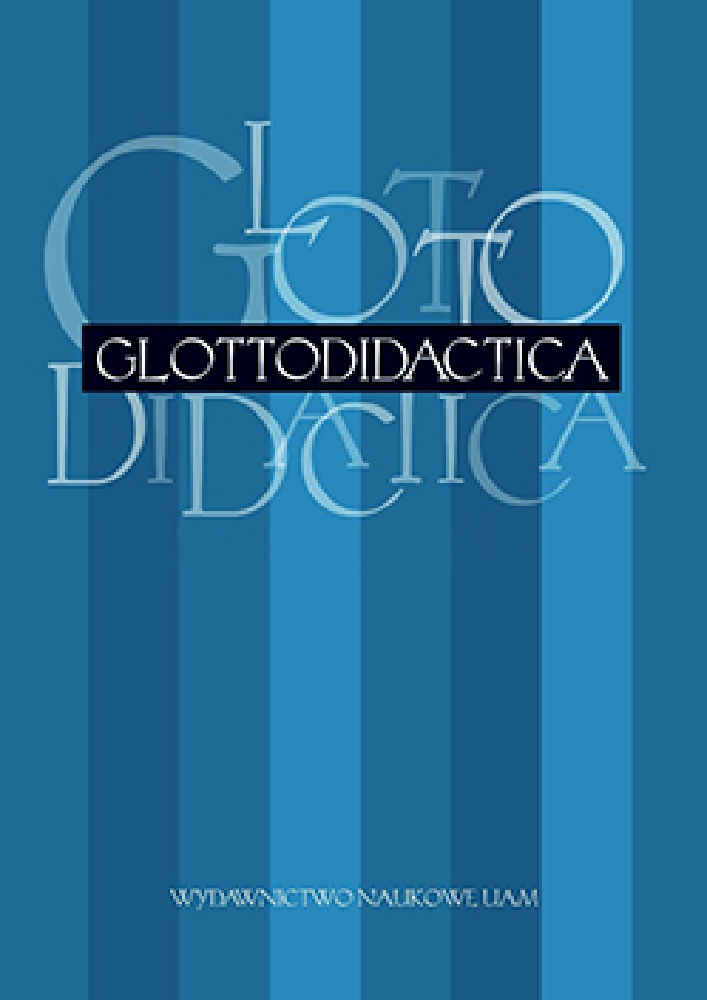Abstract
Explaining the grammatical structures that characterize the Galician language system to university students of L2 Galician involves certain difficulties, both in terms of contact with Spanish and due to its nature as an L2 language. It must be noted that such learners’ L1 is mostly Spanish, French, English or Italian. We propose in this paper an activity in which students engage in a process of practical reflection on real examples of the language. The activity will focus in par-ticular on the absence of the preposition a with the direct object (DO), i.e., Nós saudamos o teu amigo (“We greet your friend”), using for this purpose a corpus of traditional Galician popular songs, and following the recommendations of the Content and Language Integrated Learning (CLIL) model. Within this theoretical and practical approach students will also acquire knowledge of Galician culture and history, through information found in the anonymous poetry of the songbook itself.
References
Alonso-Cortés, Á. (2015). Lingüística (2nd ed.) Madrid: Cátedra.
Álvarez, R., Xove, X. (2002). Gramática da Lingua Galega. Vigo: Galaxia.
Azeredo, J.C. de (2008). Gramática Houaiss da Língua Portuguesa. São Paulo: Instituto Antônio Houaiss & Publifolha.
Carballo Calero, R. (1979). Gramática Elemental del Gallego Común (7th ed.). Vigo: Galaxia.
Coyle, D. (2002). Relevance of CLIL to the European Commission language learning objectives. In: D. Marsh (ed.), CLIL/EMILE. The European dimension: Actions, trends and foresight potential (pp. 27–28). Jyväskylä: University of Jyväskylä.
CPG = Pérez Ballesteros, J. (ed.) (1979). Cancionero Popular Gallego y en Particular de la Provincia de la Coruña (2nd ed.). Madrid: Akal.
Cunha, C., Cintra, L.F., Llinares, A. (1992). Nova Gramática do Português Contemporáneo (9th ed.). Lisboa: Sá da Costa.
Dik, S.C. (1989). The theory of functional grammar. Vol. I: The structure of the claus. Dordrecht: Foris.
Eliseu, A. (2008). Sintaxe do Português. Lisboa: Caminho.
Freixeiro Mato, X.R. (2006). Gramática da Lingua Galega (2nd ed.). Vigo: A Nosa Terra.
Givón, T. (1995). Functionalism and grammar. Amsterdam: John Benjamins. DOI: https://doi.org/10.1075/z.74
Halliday, M.A.K. (1973). Explorations in the functions of language. Bristol: Edward Arnold.
Halliday, M.A.K. (1994). An Introduction to functional grammar. London: Arnold.
Llinares, A., Morton, T. (eds.) (2017). Applied linguistics perspectives on CLIL. Amsterdam: John Benjamins. DOI: https://doi.org/10.1075/lllt.47
Llinares, A., Whittaker, R., Morton, T. (2012). The roles of language in CLIL. Cambridge: Cambridge University Press.
López Martínez, M. (1993). O Complemento Directo con Preposición a en Galego. Anexo 36 de Verba. Anuario Galego de Filoloxía. Santiago de Compostela: Universidade de Santiago de Compostela.
Lugrís Freire, M. (1931). Gramática do Idioma Galego (2nd ed.). A Coruña: Moret.
Martínez, H. (2005). Construír Bien en Español. Oviedo: Nobel & Universidad de Oviedo.
Neves, M.H. (2001). A Gramática. História, Teoria e Análise, Ensino. São Paulo: UNESP.
Peres, J. Andrade, Móia, T. (1995). Áreas Críticas da Língua Portuguesa. Lisboa: Caminho.
Posner, R. (1998). Las Lenguas Romances. Madrid: Cátedra.
PPG = Blanco, D. (ed.) (1992). A Poesía Popular en Galicia. 1745–1885 (2 vols). Vigo: Xerais.
Raposo, E. Buzaglo Paiva, Nascimento, M.F. Bacelar do, Mota, M.A. Coelho da, Segura, L., Mendes, A., Andrade, A. (eds.) (2013–2020). Gramática do Português (3 vols). Lisboa: Fundação Calouste Gulbenkian.
Saco Arce, J.A. (1868). Gramática Gallega. Lugo: Soto Freire.
Sánchez Rei, X.M. (2010). O Complemento Preposicional en Galego. Análise desde a Gramática de Valencias. A Coruña: Universidade da Coruña.
Sánchez Rei, X.M. (2016). A información dialectal nos cancioneiros galegos oitocentistas: a importancia de Pérez Ballesteros e de Saco Arce. In: A. Rodríguez Guerra (ed.), Lingüística Histórica e Dialectoloxía: Coordenadas do Cambio Lingüístico (pp. 239–272). Vigo: Universidade de Vigo.
Sánchez Rei, X.M. (2019). The Cancioneiro by Torre Enciso: A cultural and linguistic approach. In: X.M. Sánchez Rei, C.T. Castillón (eds.), Traditional Galician Cancioneiro. Compiled by Cipriano Torre Enciso (2 vols) (vol. I, pp. 41–340). Lewinson, NY / Lampeter, UK: The Edwin Mellen Press.
Sánchez Rei, X.M. (ed.) (2014). Modelos de Lingua e Compromiso. A Coruña: Baía.
Volóshinov, V.N. (2014). El Marxismo y la Filosofía del Lenguaje. Trans. by T. Bubnova. Buenos Aires: Godot.
Zamboni, A. (1993). Postille alla discussione sull’accusativo preposizionale. In: R. Lorenzo (ed.), Actas do XIX Congreso Internacional de Lingüística e Filoloxía Románicas (8 vols) (vol. V, pp. 787–808). A Coruña: Fundación Pedro Barrié de la Maza.
License
Copyright (c) 2023 UstawieniaXosé Manuel Sánchez Rei

This work is licensed under a Creative Commons Attribution-NoDerivatives 4.0 International License.
Authors
Authors of texts accepted for publication in Glottodidactica are required to complete, sign and return to the Editorial team’s office the Agreement for granting a royalty-free license to works with a commitment to grant a CC sub-license.
Under the agreement, the authors of the texts published in Glottodidactica grant Adam Mickiewicz University in Poznań a non-exclusive, royalty-free license and authorize the use of Attribution-NoDerivatives 4.0 International (CC BY-ND 4.0) Creative Commons sub-license.
The authors retain the right to the free disposal of the work.
Users
Interested Internet users are entitled to use works that have been published in Glottodidactica since 2016, under the following conditions:
▪ attribution – obligation to provide, together with the distributed work, information about the authorship, title, source (link to the original work, DOI) and the license itself.
▪ no derivatives – the work must be preserved in its original form. Without the author's consent, it is not possible to distribute the modified work in the form of translations, publications, etc.
Copyrights are reserved for all texts published before 2016.
Miscellaneous
Adam Mickiewicz University in Poznań retains the property right as a whole (layout, graphic form, title, cover design, logo etc.).
Privacy statement
The names and email addresses published on this journal site will be used exclusively for the purposes declared by this journal and cannot be used for any other purpose or by any other party.





